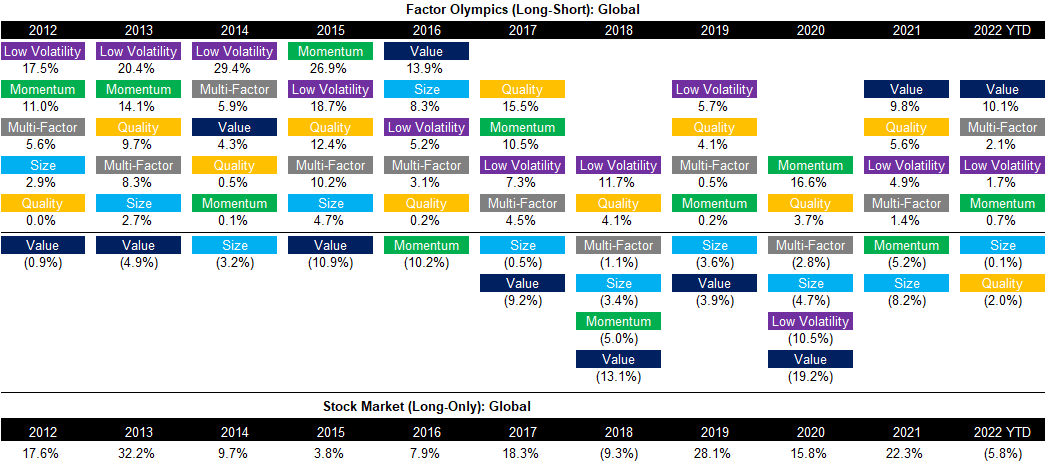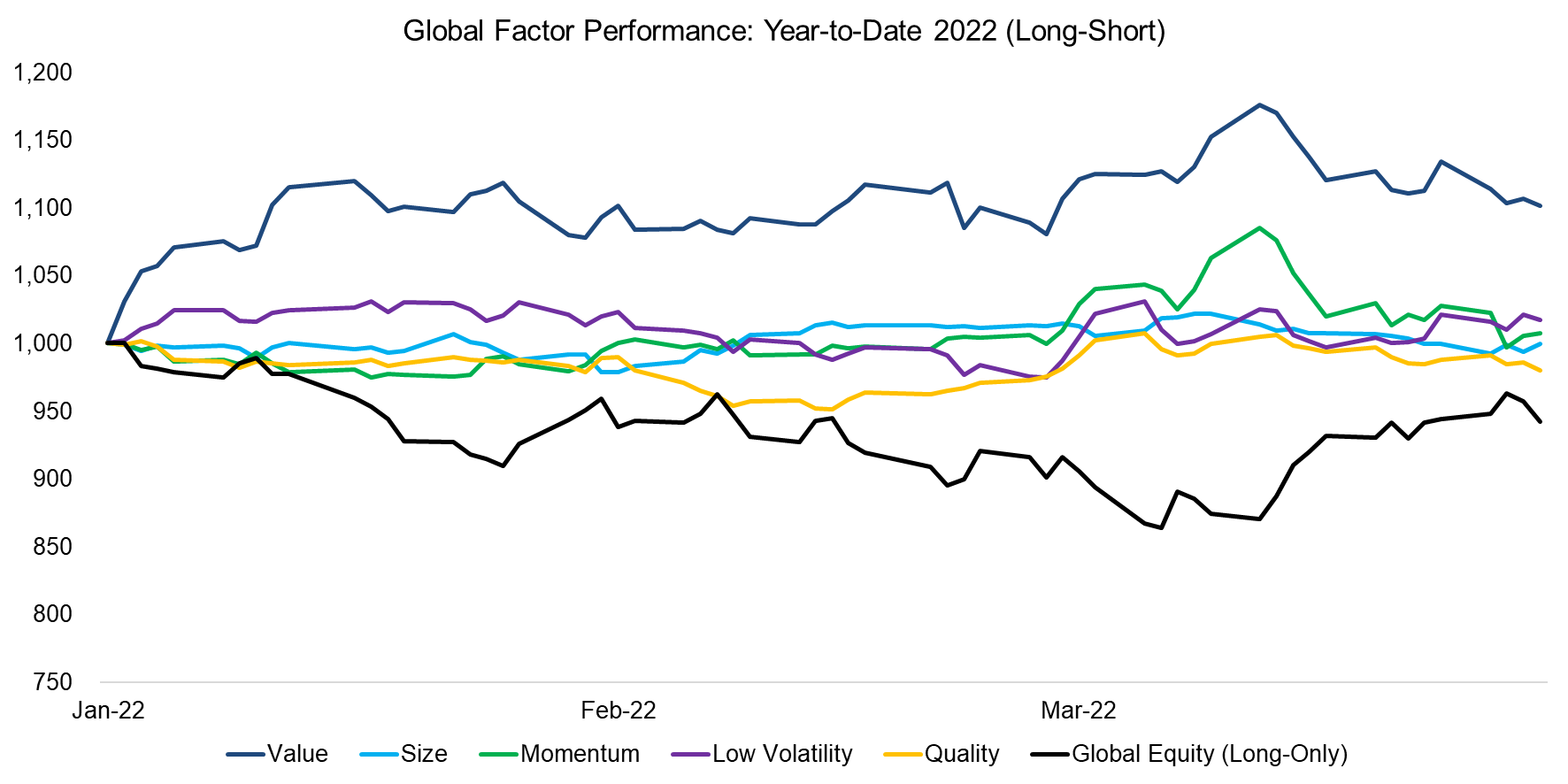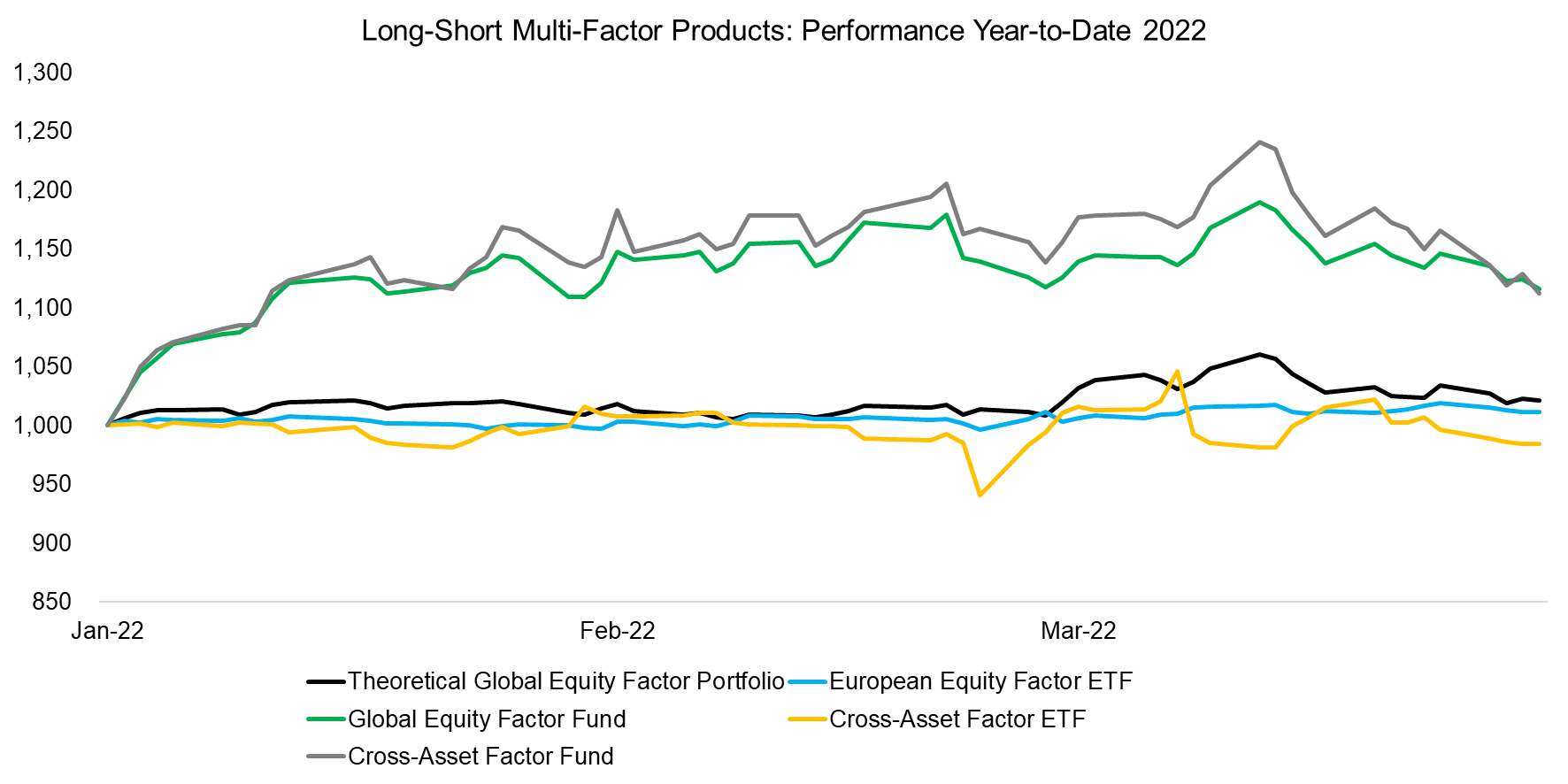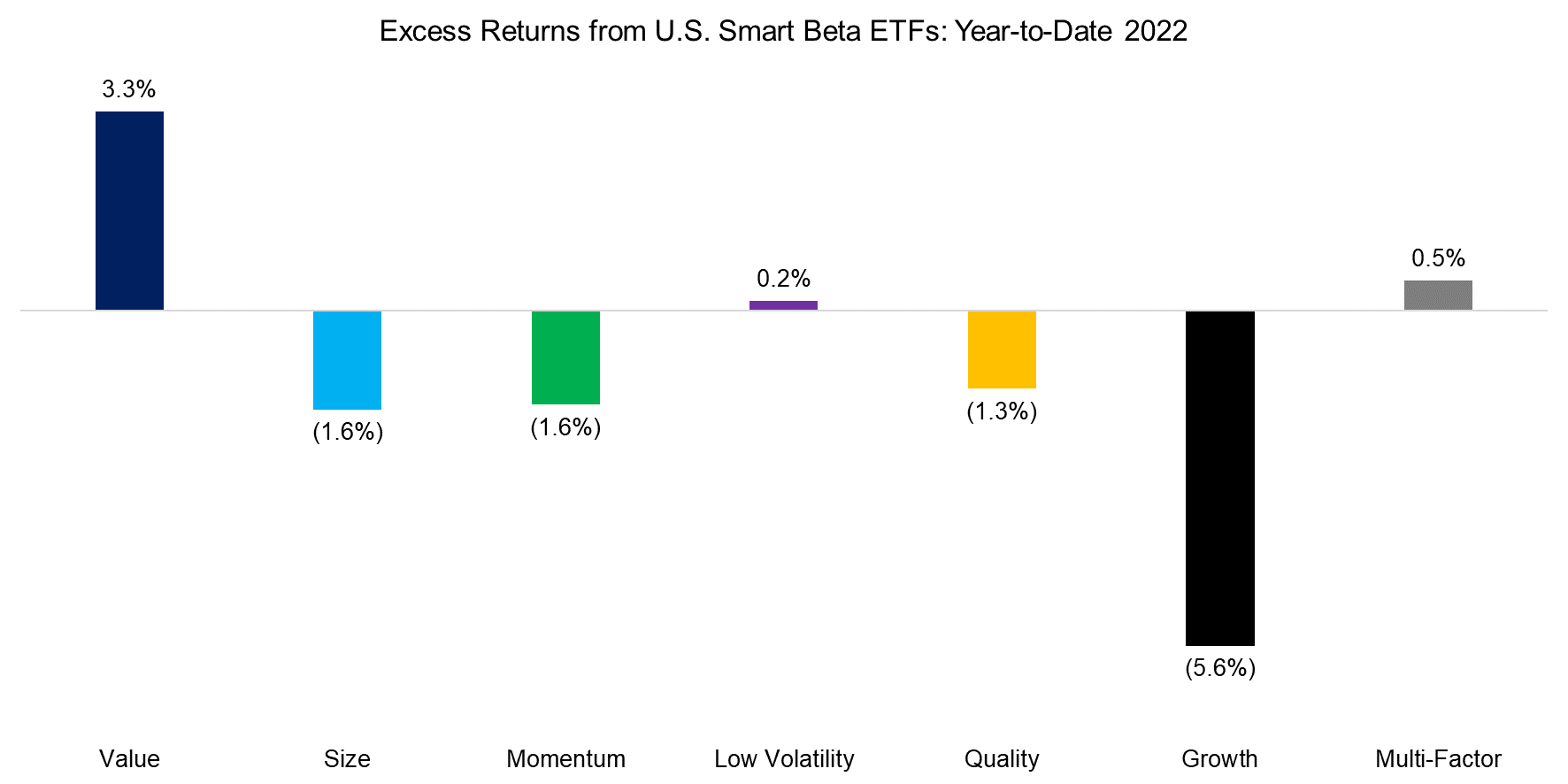Factor Olympics Q1 2022
And the winner is…
April 2022. Reading Time: 10 Minutes. Author: Nicolas Rabener.
SUMMARY
- Factor volatility was low despite the significant geopolitical and economic turmoil in Q1 2022
- Value is the clear winner with double-digit gains
- Quality stocks underperformed, but only moderately
INTRODUCTION
We present the performance of five well-known factors on an annual basis for the last 10 years. Specifically, we only present factors where academic research supports the existence of positive excess returns across market cycles and asset classes (read Factor Olympics Q4 2021).
METHODOLOGY
Our factors are created by constructing long-short beta-neutral portfolios of the top and bottom 10% of stocks in the US, Europe, and Japan, and 20% in smaller markets. Only stocks with a minimum market capitalization of $1 billion are included. Portfolios rebalance monthly and transactions incur 10 basis points of costs.
FACTOR OLYMPICS: GLOBAL RETURNS
The table below shows the long-short factor performance for the last 10 years ranked top to bottom. The global series is comprised of all developed markets in Asia, Europe, and the US. Aside from displaying the factor performance, the analysis highlights the significant factor rotation in terms of profitability from one year to the next, highlighting the benefits of diversified exposure.
The performance of an equal-weighted multi-factor portfolio was positive as of the end of the first quarter and almost all of the performance can be attributed to the Value factor. The other four factors were slightly positive to negative, but effectively netted each other off.

Source: FactorResearch
TRENDS IN GLOBAL FACTOR PERFORMANCE
The performance of the factors in the first quarter of 2022 seems somewhat muted compared to the significant geopolitical and economic turmoil. Although the Value factor generated positive double-digit returns, most of that was generated in January. Thereafter the performance was rather flat, similar to the other factors.
Most investors would likely have expected strong performance of quality stocks with the risk of the Russian invasion into Ukraine escalating, but surprisingly these stocks only outperformed moderately and already have given up most of the returns by the quarter-end.

Source: FactorResearch
PERFORMANCE OF LONG-SHORT MULTI-FACTOR PRODUCTS
There are only a few liquid alternative mutual funds and ETFs that provide exposure to factors in the long-short format as seen in academic research. Given the poor performance of factor investing in recent years, many products were liquidated.
We highlight the performance of four surviving products and observe rather divergent performance in 2022, which is similar to the performance in 2021. The Global Equity Factor (QMNIX) and Cross-Asset Factor (QSPRX) funds are from the same asset management company, and equities represents the largest allocation within the cross-asset fund, which explains why they are highly correlated. Furthermore, their performance reflects a large exposure to the Value factor, which performed well in the first quarter of 2022 and explains the strong performance of these two products.
The European multi-factor equity fund (MKTN) generated similar returns to the theoretical multi-factor portfolio, which was essentially zero in year-to-date 2022. The Cross-Asset ETF (FLSP) exhibited slightly more volatility, but also failed to generate positive returns.

Source: FactorResearch
SMART BETA EXCESS RETURNS
Although investors should allocate to factors constructed as long-short portfolios given that these offer high diversification benefits, most invest via long-only smart beta ETFs. Following the money, we highlight the excess returns generated from investing in smart beta ETFs in the US, which represents a universe of 160+ products and approximately $800 billion of assets under management (read Smart Beta: Broken by Design?).
The returns will naturally be somewhat different as long-short factor portfolios are constructed beta-neutral, i.e. there is a short portfolio and leverage is used to achieve beta-neutrality, and stocks are typically weighted equally. Smart beta ETFs are long-only and mostly weight stocks by their market capitalization.
The performance of the long-short factors and excess returns of smart ETFs overlapped for the Value, Size, Low Volatility, and Quality, while it was directionally different for the Momentum factor. However, the return of the latter was +/- 2%, so we should not read too much into this. Growth stocks underperformed the stock market significantly, which mirrors the strong performance of the value factor.

Source: FactorResearch
FACTOR CORRELATIONS
The correlation matrix below highlights the global one-year factor correlations based on daily data. As of the first quarter of 2022, we observe somewhat more unusual correlations. Specifically, Value and Size factors tend to be positively correlated, but were not over the last 12 months. Quality stocks and small stocks were strongly negatively correlated, which is also less frequently seen.

Source: FactorResearch
FURTHER THOUGHTS
The standard question after a rally of the Value factor is if this was it, or if there is further room for positive returns?
Naturally, there is no answer to this with a high probability of being correct as it represents pure market timing, which is impossible in the short-term. However, although we can not predict the movements of stock in the short-term, research shows that in the long-term returns are a function of valuations.
In a similar fashion, valuations also matter for factor returns. If we measure the difference in valuation between the most expensive and the cheapest stocks, then this is still in the top quartile. Stated differently, the Value factor is still cheap, and expected returns are attractive.
RELATED RESEARCH
Improving the Odds of Value Investing
ABOUT THE AUTHOR
Nicolas Rabener is the CEO & Founder of Finominal, which empowers professional investors with data, technology, and research insights to improve their investment outcomes. Previously he created Jackdaw Capital, an award-winning quantitative hedge fund. Before that Nicolas worked at GIC and Citigroup in London and New York. Nicolas holds a Master of Finance from HHL Leipzig Graduate School of Management, is a CAIA charter holder, and enjoys endurance sports (Ironman & 100km Ultramarathon).
Connect with me on LinkedIn or X.

